Writing about my EOS3 got me wondering, when had I last used it exactly, and on what? Looking through my notes showed use had gradually petered out and towards the end the photos were of nothing especially interesting. And some of the very last films had been spoilt by a processing error in a normally reliable lab I used regularly, an indication of the way things were going at the time perhaps.
But a few weeks before it was last used a trip to France in early July 2007 and some images of and around Rocamadour in the Lot Department marked the end of the beginning of the transition to digital only photography.
On the first evening the illuminations on the religious buildings and shrines were turned on (dates and times are usually listed on the Commune website ). Perched on a rock at dusk next to the road climbing the opposite side of the gorge I took a series of photos with a 35mm lens and a 70-200, initially trying to get a balance between the fading daylight and the brightening floodlights. I remember trying to spot meter off mid-tones and even so bracketing either way. The Velvia 100 I used gave quite accurate colours with long exposures. Velvia 50 would have gone a bit strange with some odd colour shifts and if I had still been using it I would probably have changed to Provia instead. Despite everything photographers feared at the time Velvia 100 was an improvement over Velvia 50, with pleasing digital-like colour rendition and contrast.
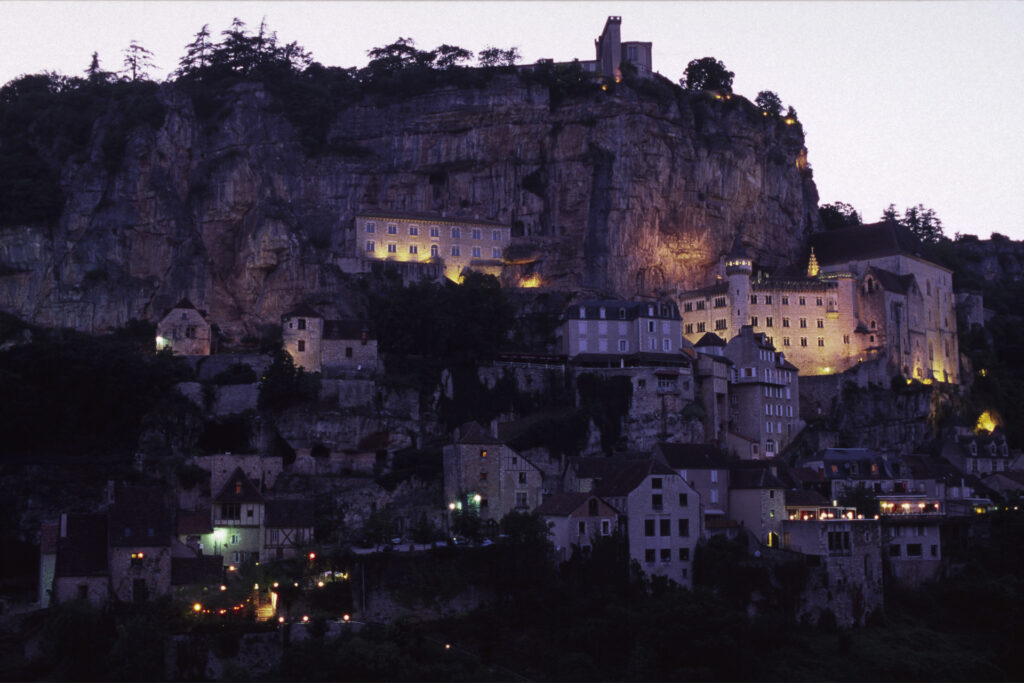
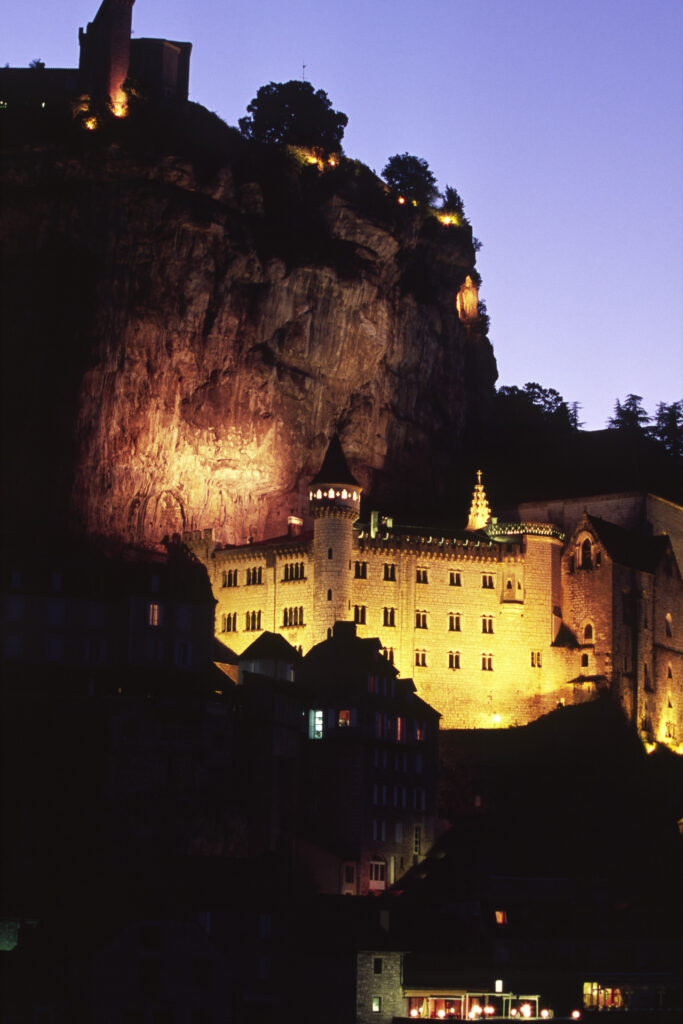
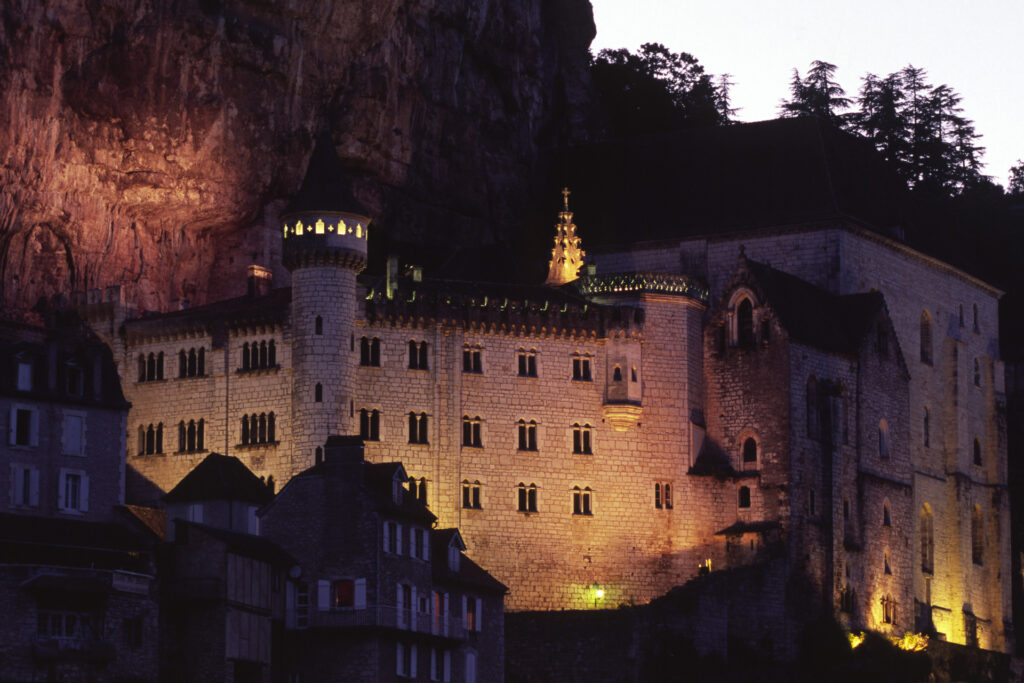
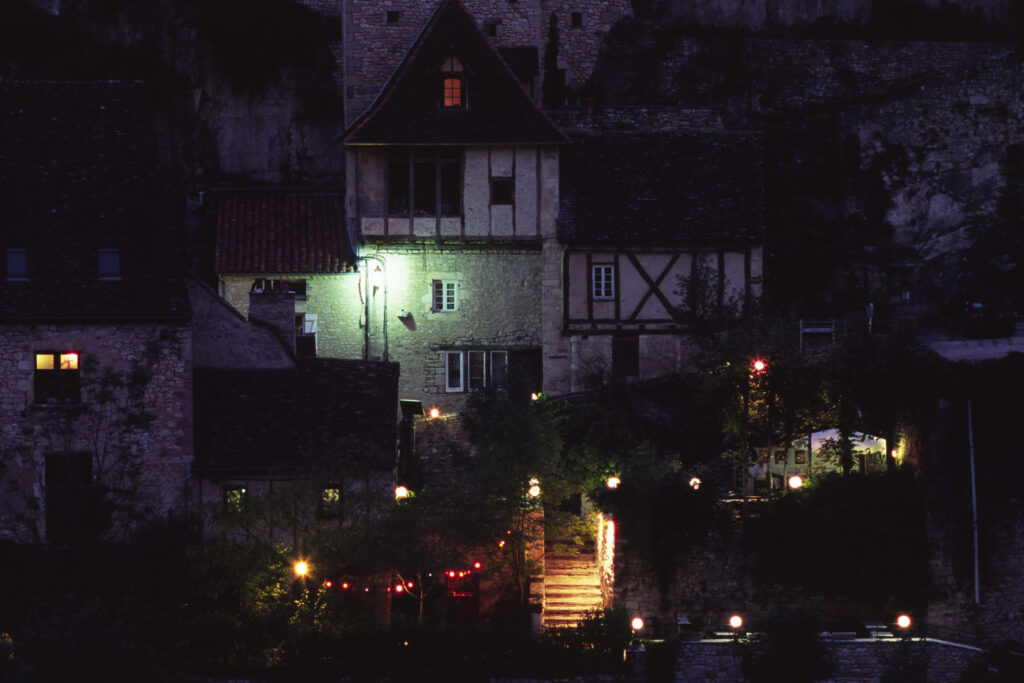 The time to go into the town is before it wakes up and the tourists arrive, certainly before 10am, and earlier is better. In the summer as the cliff face is south-east facing the sun reaches the town early and it soon starts to get hot. From parking at the bottom of the gorge steps lead up through the town all the way to the castle at the top, the climb best done out of the heat of the afternoon and the crowds of visitors. The horizontal distance between the castle and the bottom of the gorge is less than 100 metres, but there are an awful lot of steps. The climb takes you along the streets of the town and then through the Sanctuary and past the various shrines in the cliff face above. Open areas give views of the gorge and the roofs of the town below. The morning photos of the town were all taken with a 20mm lens possibly some of them with a polariser, though I failed to make a note of it at the time if I did.
The time to go into the town is before it wakes up and the tourists arrive, certainly before 10am, and earlier is better. In the summer as the cliff face is south-east facing the sun reaches the town early and it soon starts to get hot. From parking at the bottom of the gorge steps lead up through the town all the way to the castle at the top, the climb best done out of the heat of the afternoon and the crowds of visitors. The horizontal distance between the castle and the bottom of the gorge is less than 100 metres, but there are an awful lot of steps. The climb takes you along the streets of the town and then through the Sanctuary and past the various shrines in the cliff face above. Open areas give views of the gorge and the roofs of the town below. The morning photos of the town were all taken with a 20mm lens possibly some of them with a polariser, though I failed to make a note of it at the time if I did.
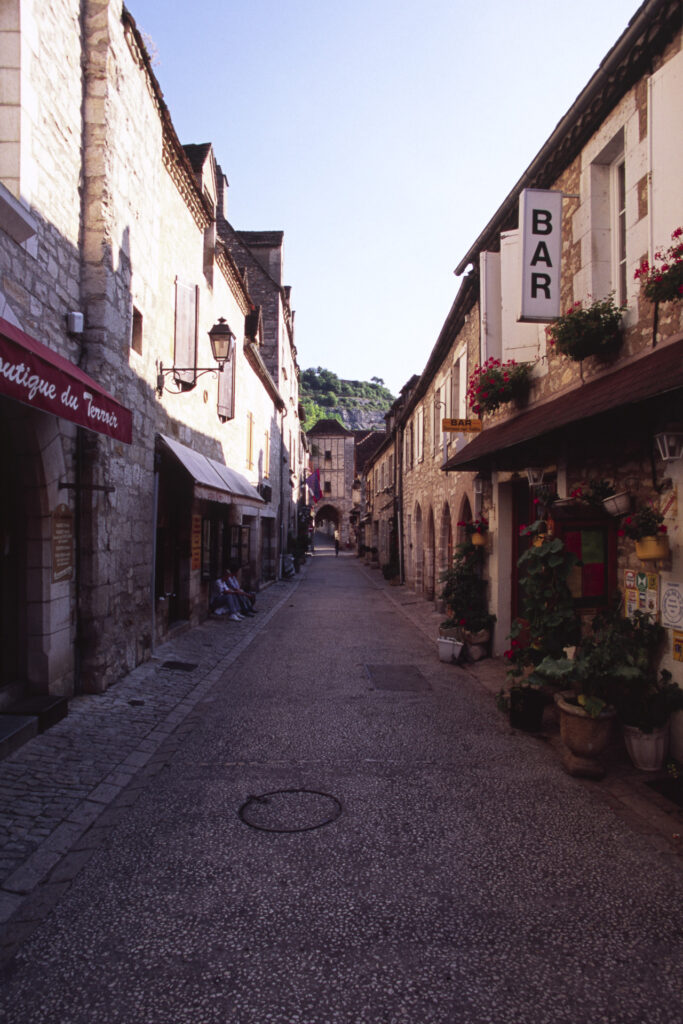
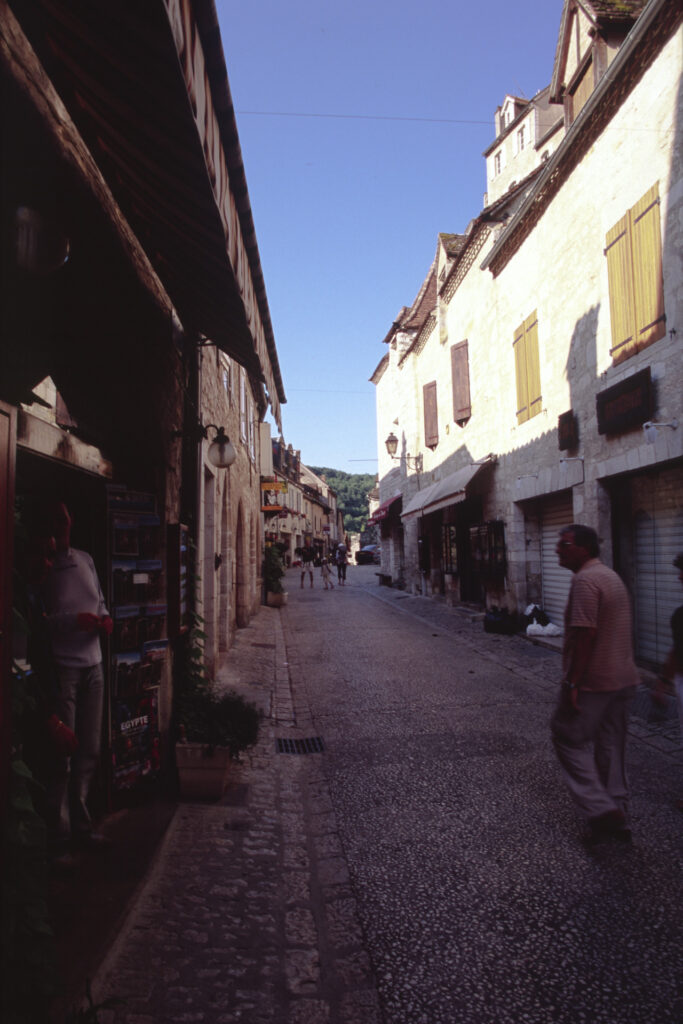
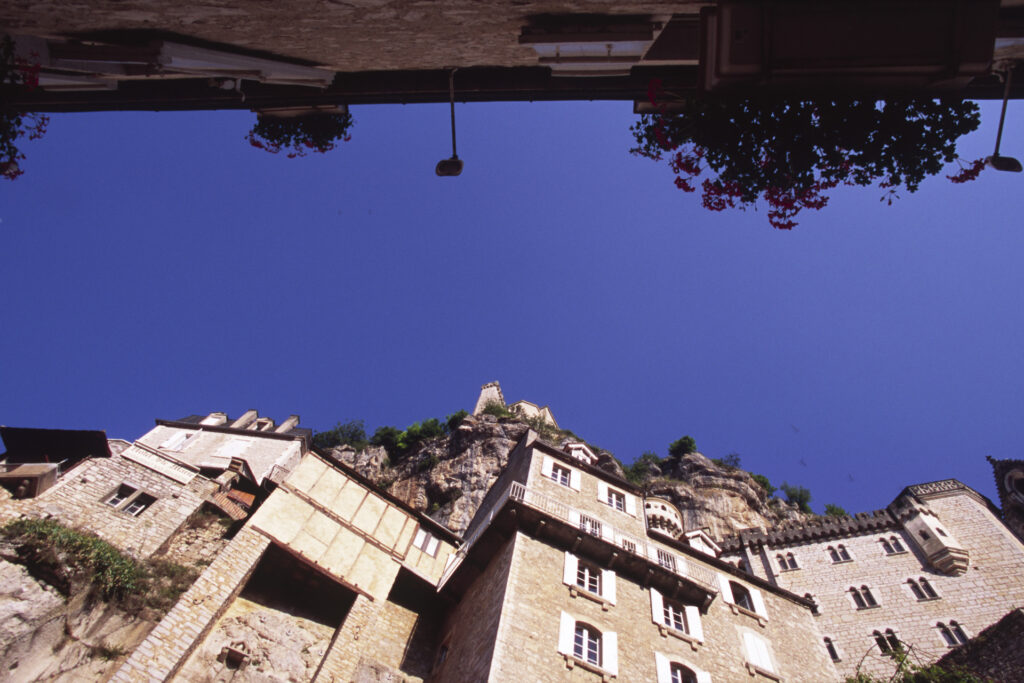
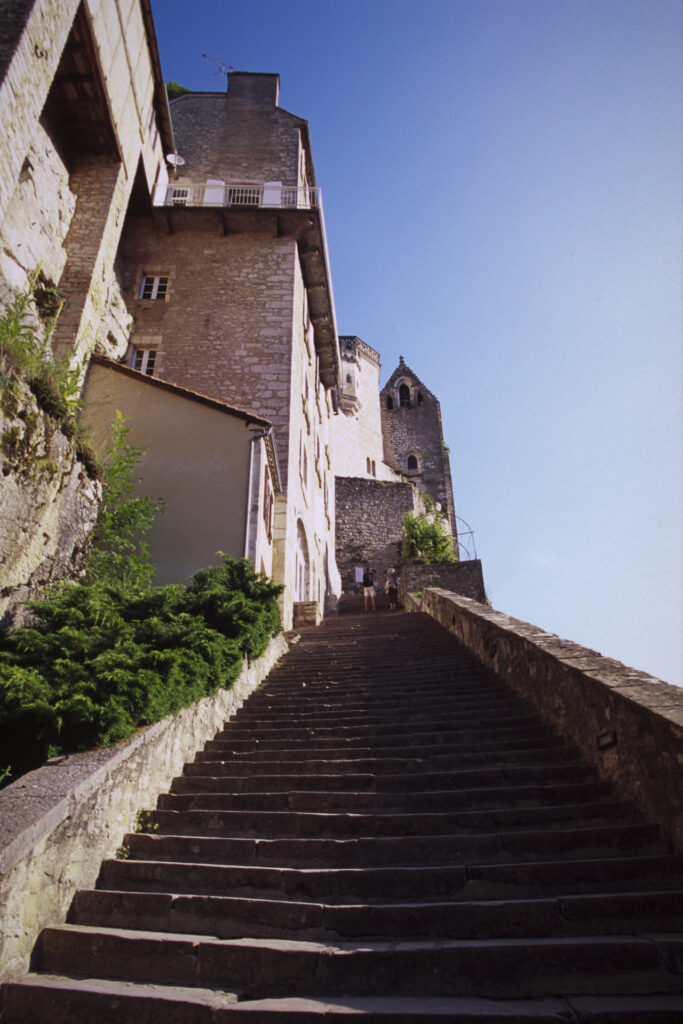
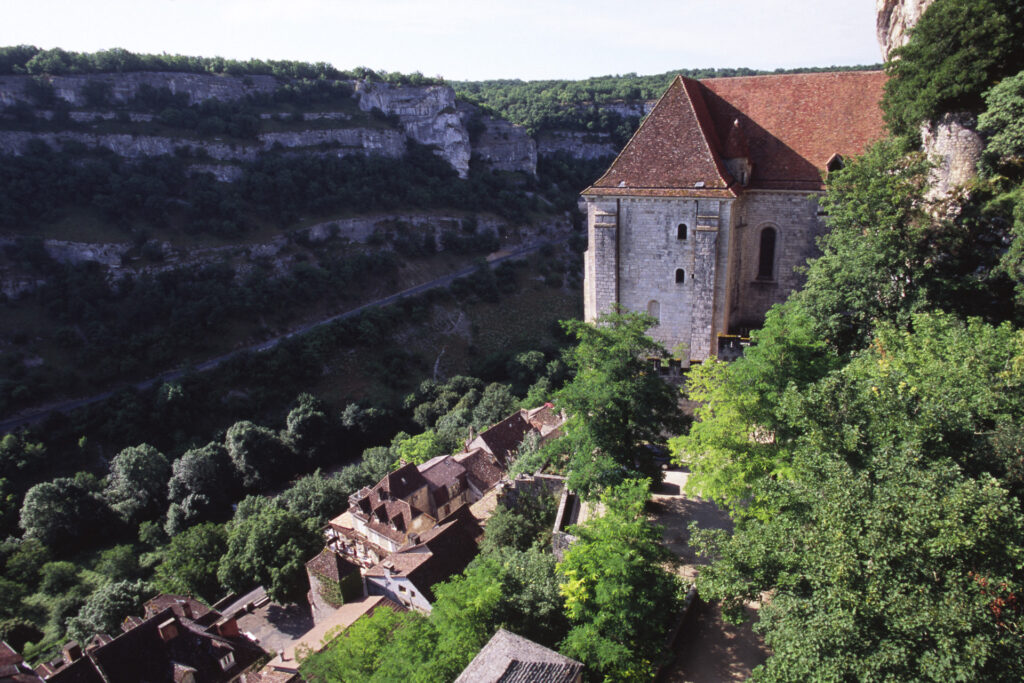 But the best reason for making the climb is to get level with the flocks of hirundines that swarm over the town, mainly Swallows, House Martins and Swifts. In addition to the commoner species Crag Martins at the northern edge of their range nest on the Sanctuary and other buildings. And amongst the screaming flocks of Swifts a few pairs of Alpine Swifts can be seen, also at the edge of their range, take binoculars as well as a camera or two. Coming down after is much easier than the climb up, you can also start from the top but then the climb back up is at the end.
But the best reason for making the climb is to get level with the flocks of hirundines that swarm over the town, mainly Swallows, House Martins and Swifts. In addition to the commoner species Crag Martins at the northern edge of their range nest on the Sanctuary and other buildings. And amongst the screaming flocks of Swifts a few pairs of Alpine Swifts can be seen, also at the edge of their range, take binoculars as well as a camera or two. Coming down after is much easier than the climb up, you can also start from the top but then the climb back up is at the end.
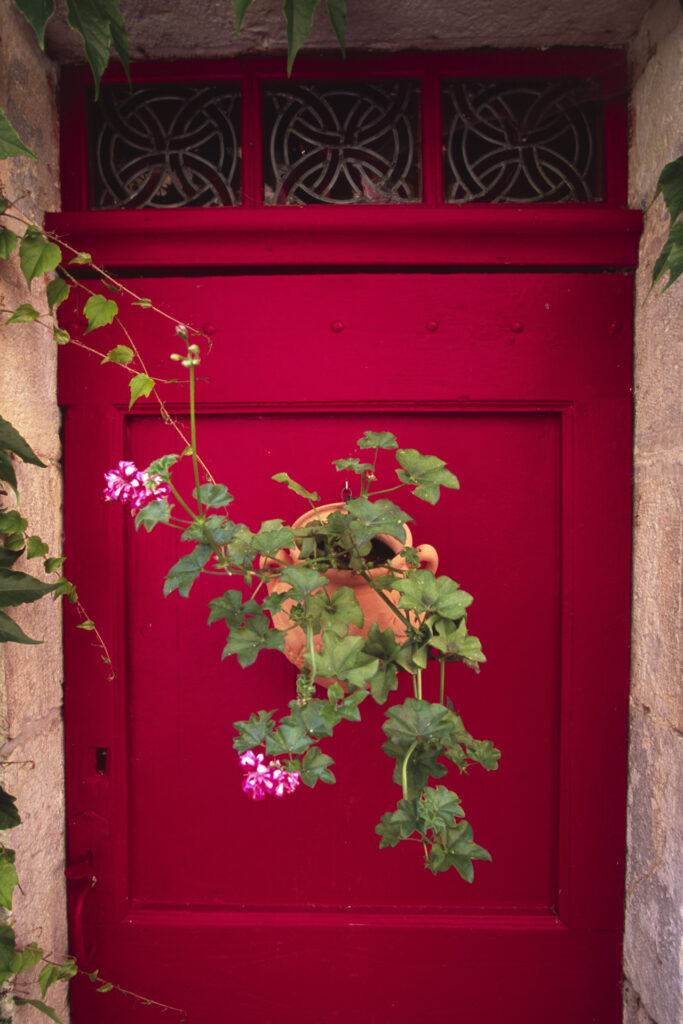
The insects and plants on the limestone plateau of the Causse de Gramat to the south of the gorge were the main attraction for staying in the area. There was one decent evening and the following morning when all these photos were taken, but generally huge thunderstorms and cold blustery showers were the order of the day. As it was for most of 2007, and so I didn’t come back with many successful images.
More of the photos are on my website.
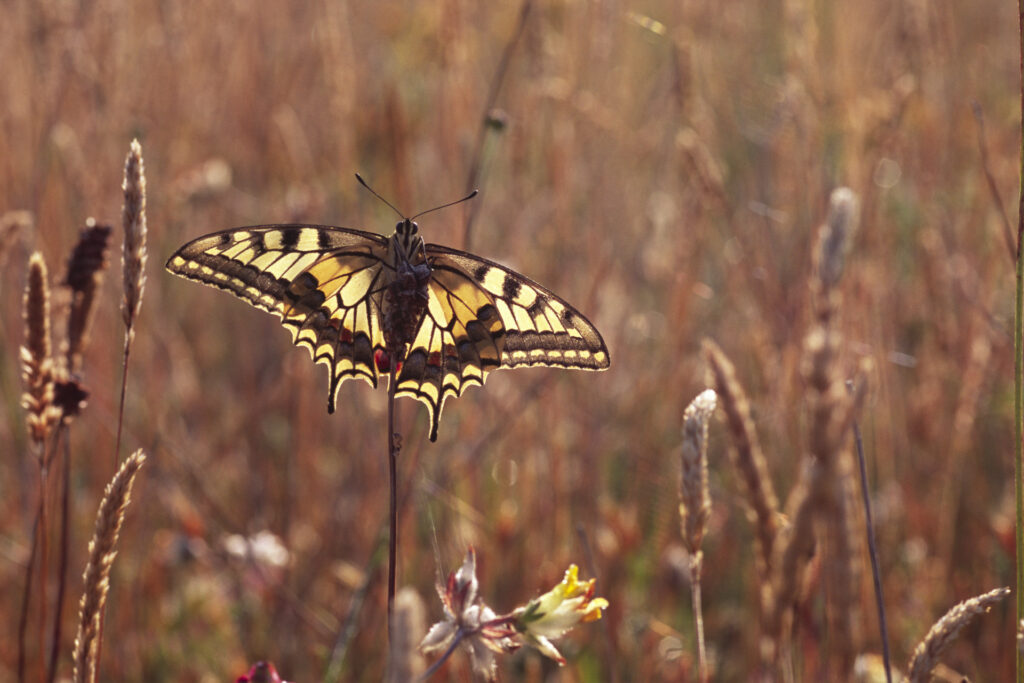
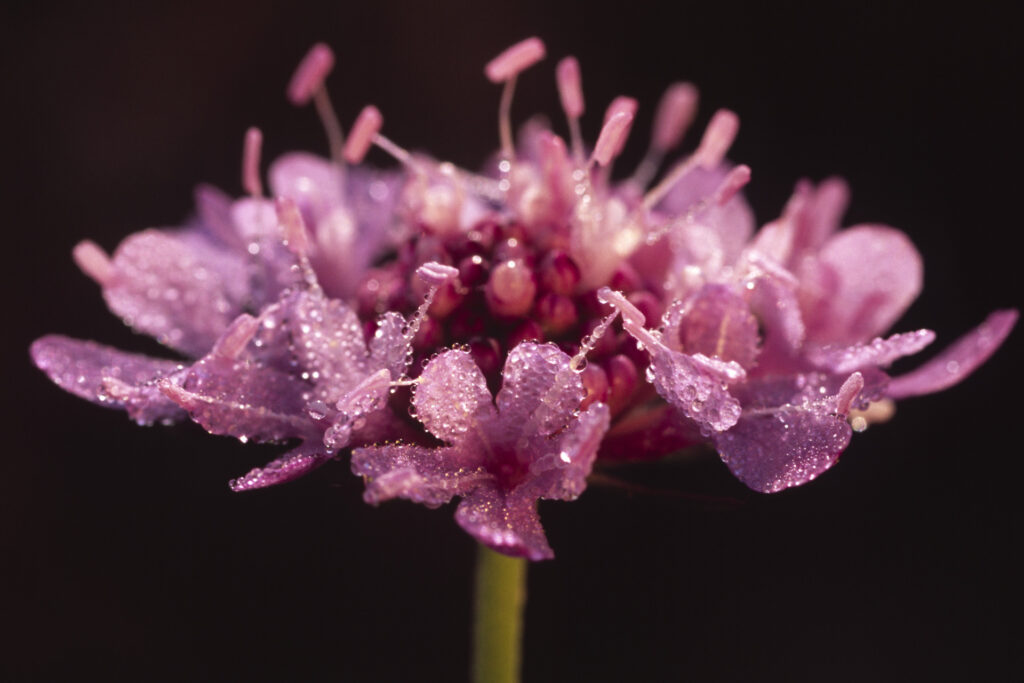
Share this post:

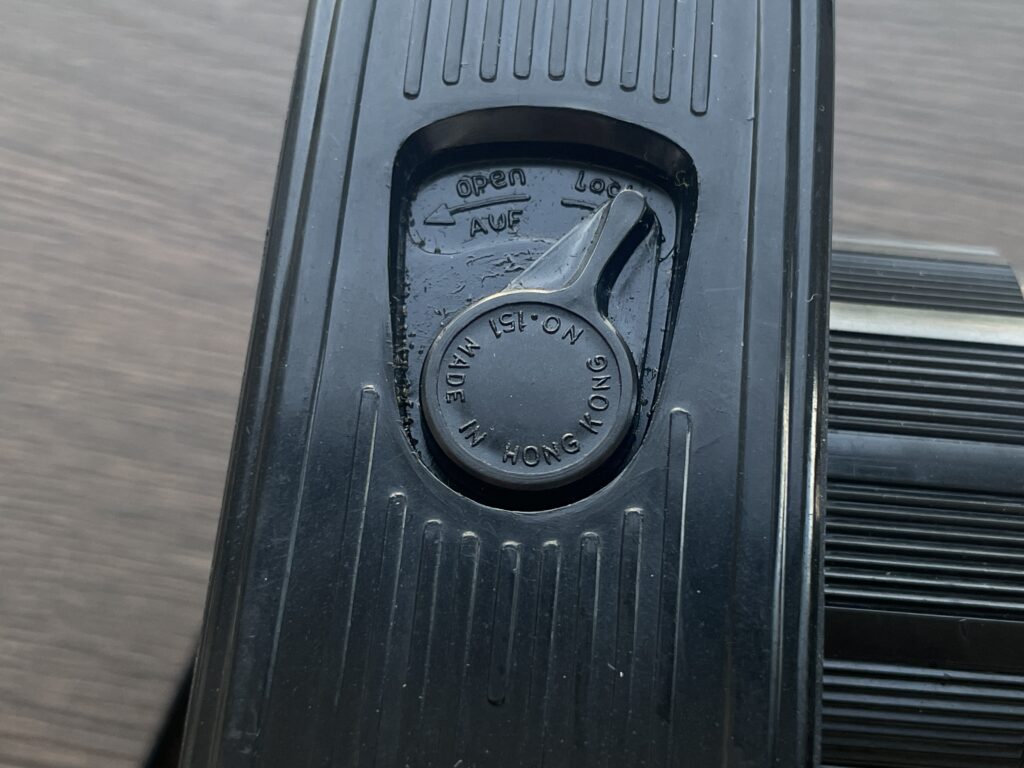
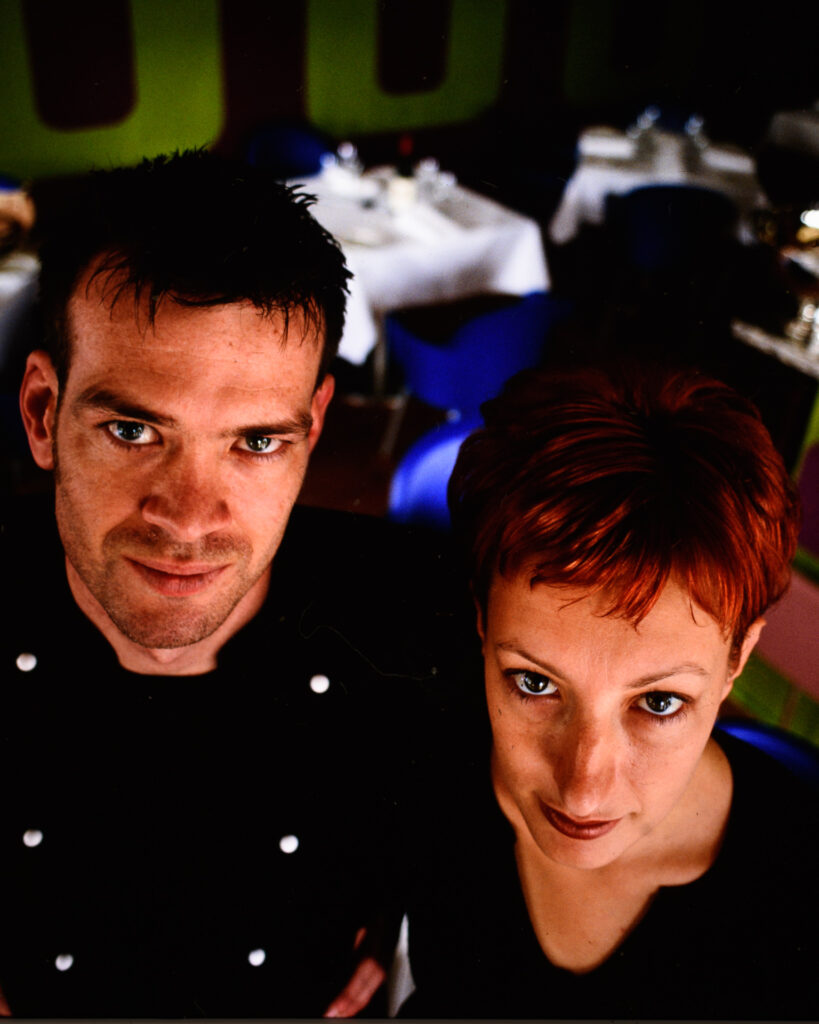
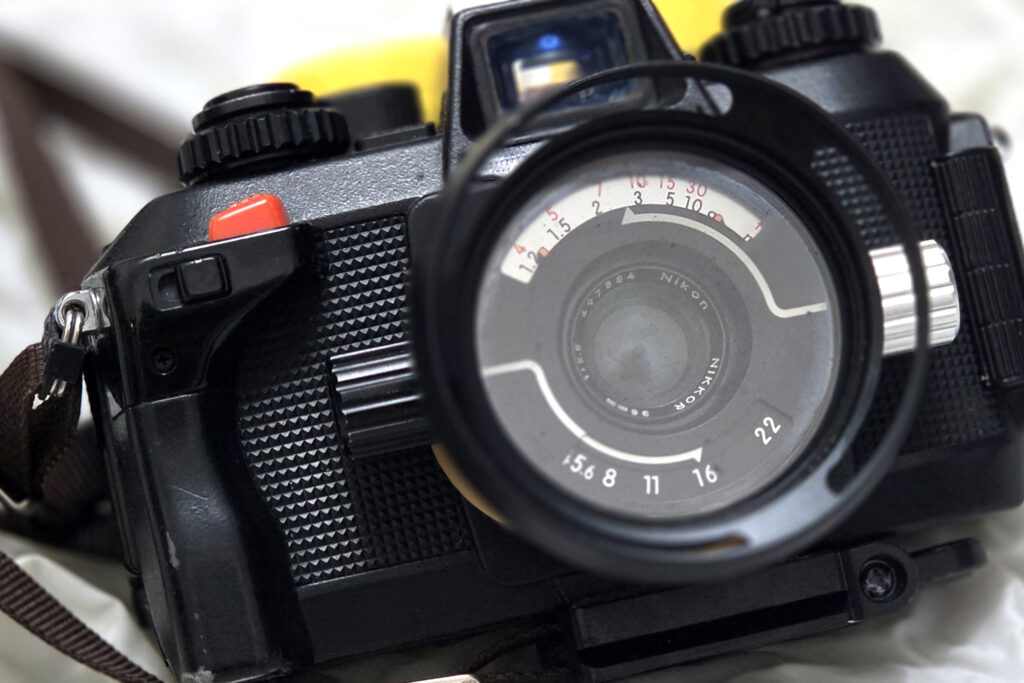
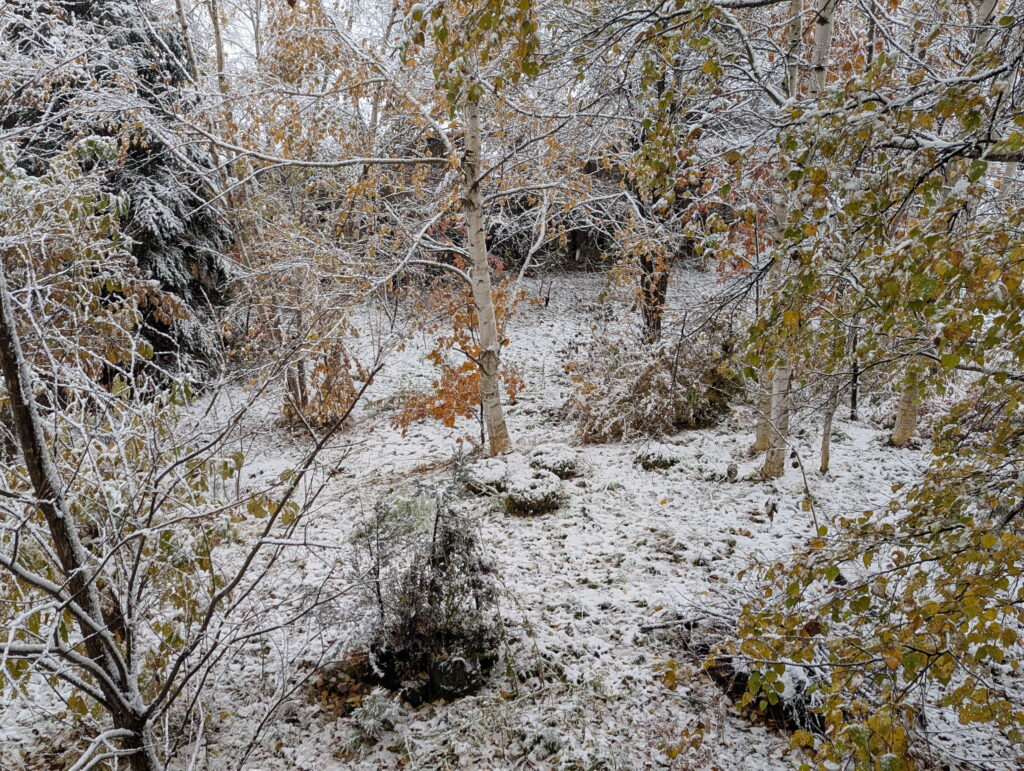
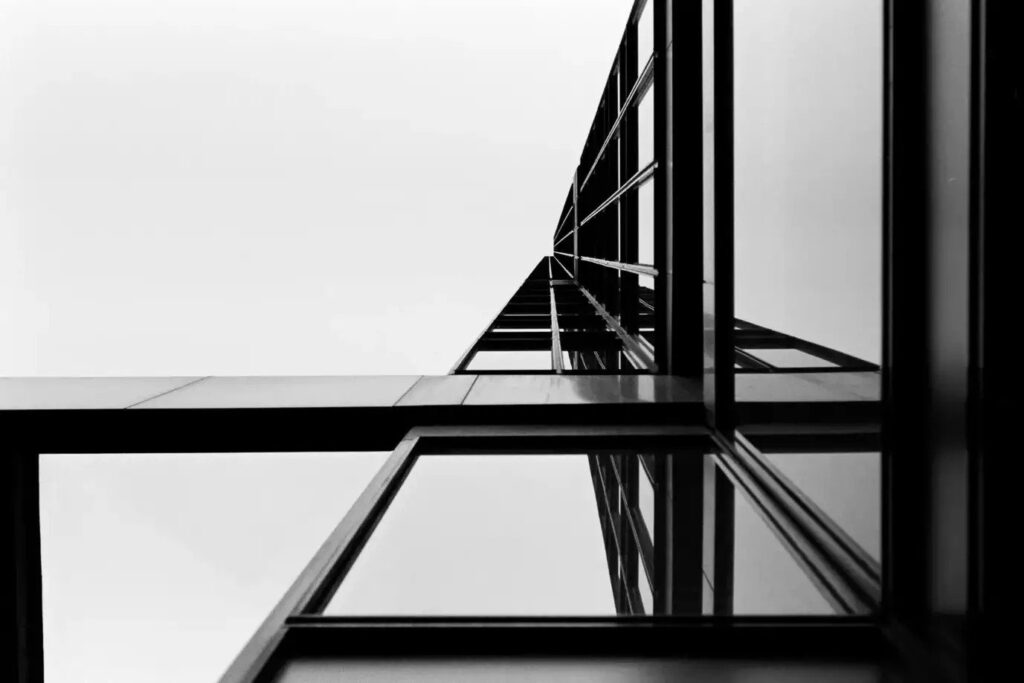
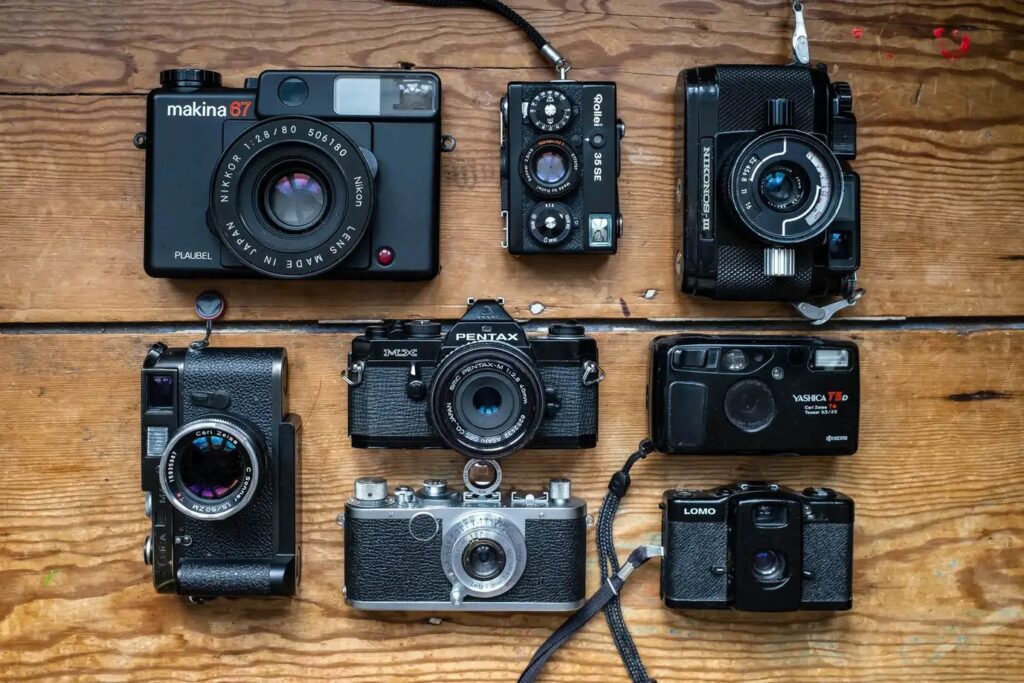
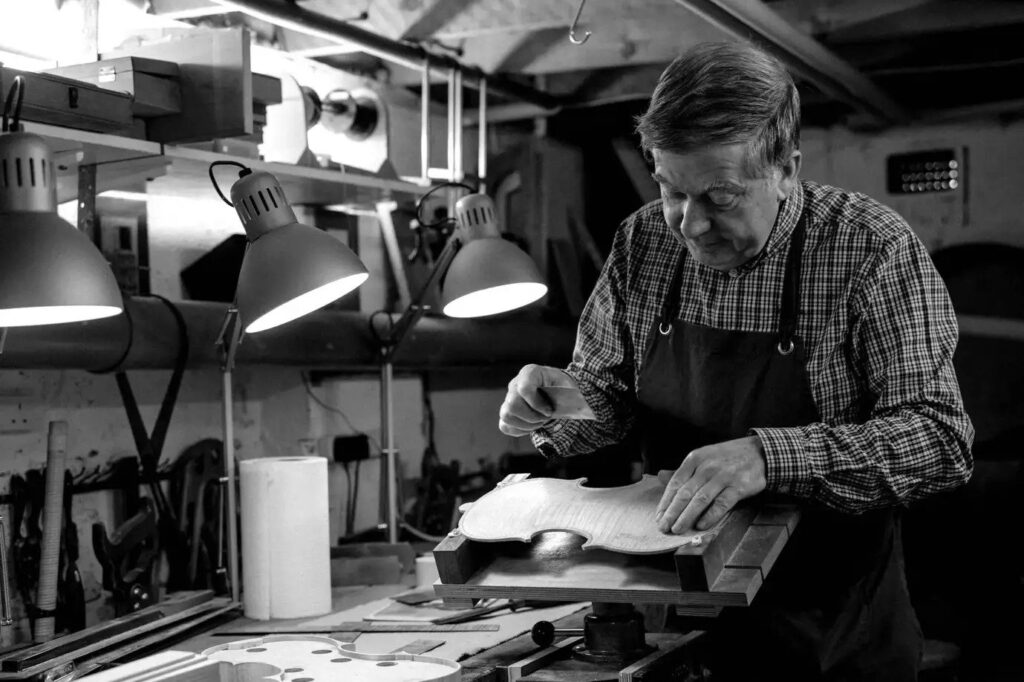
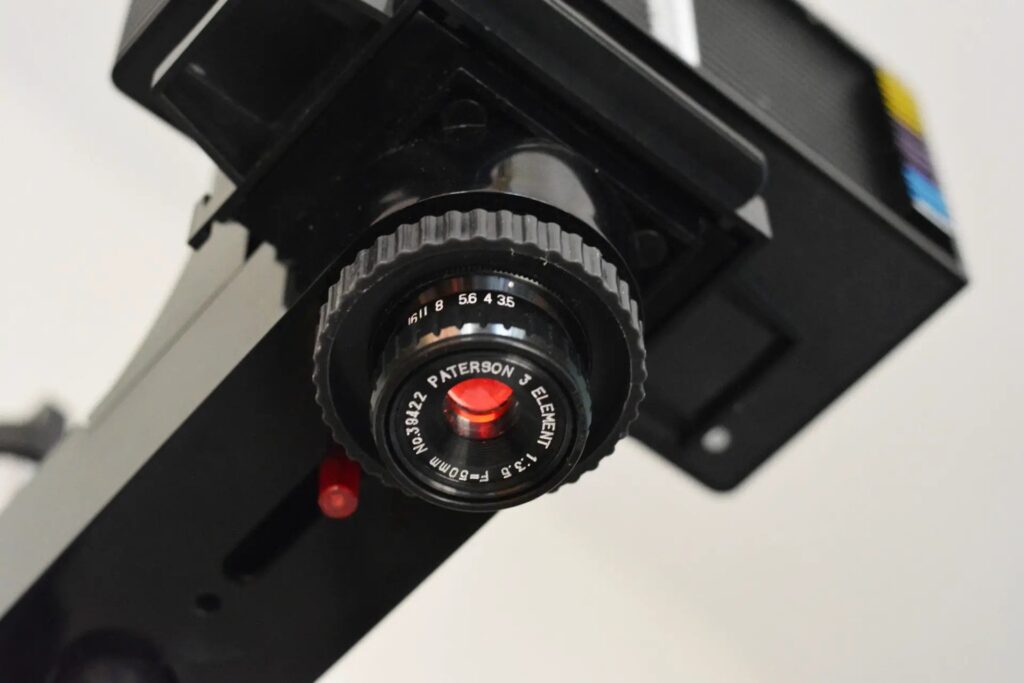
Comments
Geoff Chaplin on Rocamadour with an EOS3 and Velvia 100
Comment posted: 08/06/2025
Comment posted: 08/06/2025
Gary Smith on Rocamadour with an EOS3 and Velvia 100
Comment posted: 08/06/2025
Comment posted: 08/06/2025
Ibraar Hussain on Rocamadour with an EOS3 and Velvia 100
Comment posted: 09/06/2025
Looks like a Photographers paradise
Comment posted: 09/06/2025
Gary on Rocamadour with an EOS3 and Velvia 100
Comment posted: 09/06/2025
Comment posted: 09/06/2025
Jeffery Luhn on Rocamadour with an EOS3 and Velvia 100
Comment posted: 09/06/2025
I enjoyed your images! The dusk shots are great. I always like it when towns spend the money to light up their monument buildings.
Jeffery
Comment posted: 09/06/2025
Alastair Bell on Rocamadour with an EOS3 and Velvia 100
Comment posted: 13/11/2025
We now own a holiday home 3 hours away so I think it may be time to revisit this little gem.
Thank you for posting amazing photos and bringing back the memories of that trip.
Incidentally we went as far as Chamonix and back to the UK on that trip. It was a superb way to see France.
Thanks again